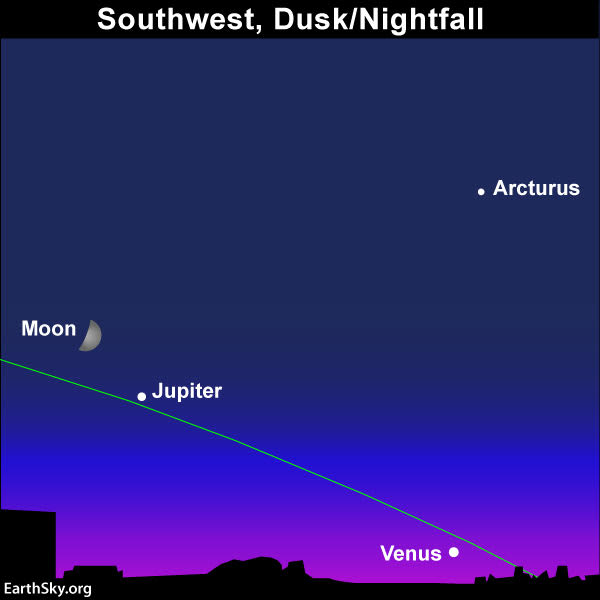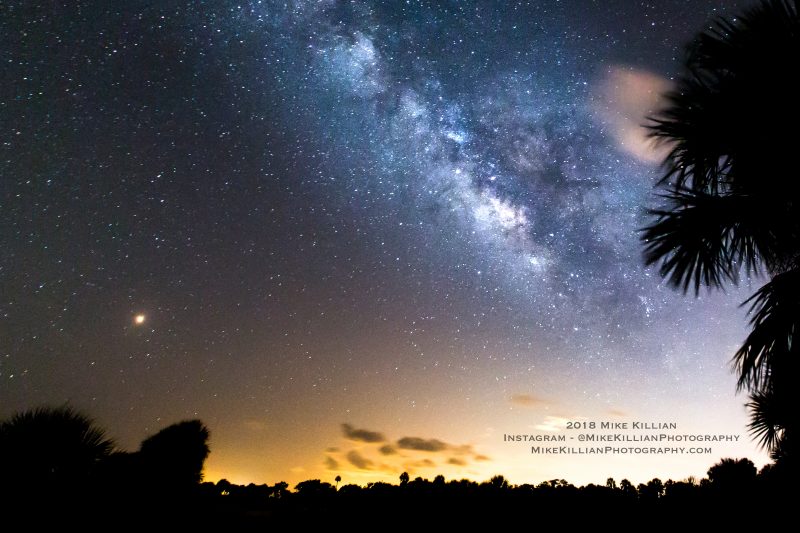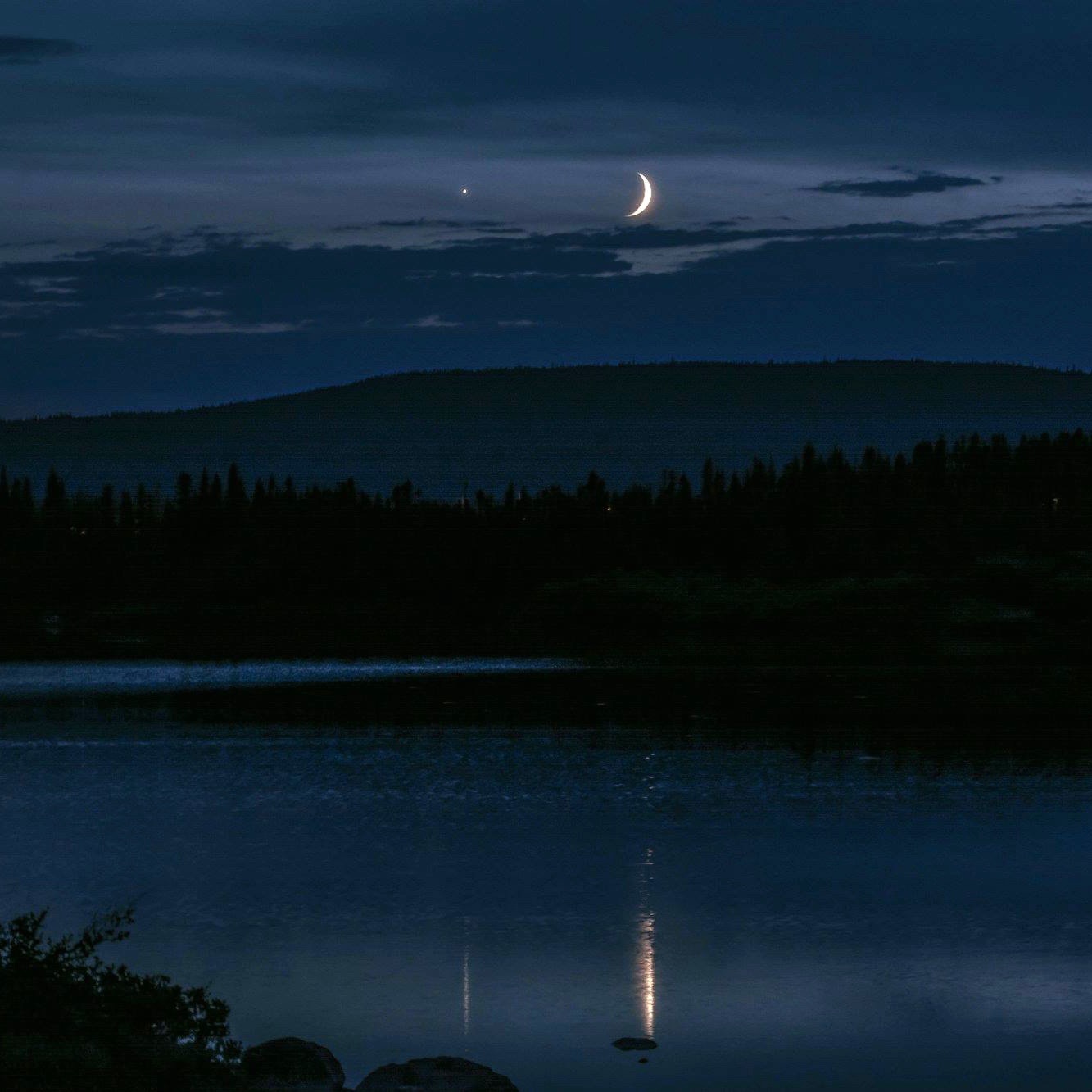Above: Last month’s moon and Venus – July 15, 2018 – teaming up to reflect off Harrie Lake in Labrador City, Newfoundland. Photo by Timothy Collins. View full image.
On August 13, 2018, look west after sunset to see the young moon and planet Venus, blazing in the evening twilight. Then keep watching in the weeks ahead, as the moon sweeps past all four bright planets now in the evening sky. The moon and Venus rank as the second- and third-brightest celestial bodies, respectively, after the sun. So they’ll pop out in the west shortly after the sun goes down.
Dazzled yet? Now look for something more subtle, the soft glow of earthshine illuminating the night side of the moon. Earthshine on the night side of the moon is analogous to bright moonlight illuminating an earthly landscape around the time of full moon. Indeed, from the moon right now, the Earth appears in a brightly shining, just-past-full phase. Binoculars will accentuate your view of earthshine on the moon’s night side.
And don’t forget to keep watching beyond August 13. Although Venus reigns as the sky’s brightest planet, it’s hardly the only bright beacon to light up the August 2018 evening sky. Three other planets beam as soon as darkness falls. When should you look for the other planets? They are arrayed across the sky. You can see them throughout the evening.
In their order going eastward of Venus, these brilliant beauties are Jupiter, Saturn and Mars.



What time should you look? On August 13, look soon as the sky begins to darken if you want to see the moon and Venus. From middle latitudes in North America on the 13th, the moon and Venus sit rather low in the west at dusk. They follow the sun beneath the horizon roughly 90 minutes after sundown. At mid-northern latitudes in Europe and Asia, the moon lurks low in the sky at dusk on August 13 and sets before Venus does.
From the Southern Hemisphere, the situation is different. The waxing moon and Venus appear higher up at dusk on August 13, and stay out well after nightfall. The reason is it’s nearly spring there now. Spring skies (from either hemisphere) bring an ecliptic – or path of the sun, moon and planets – that’s nearly perpendicular to the horizon. From temperate latitudes in the Southern Hemisphere (Chile, Argentina, South Africa, southern Australia, New Zealand), Venus is out for nearly 4 hours after the sun!
Click here for recommended sky almanacs; they can give you the setting times of the sun, moon, Venus and other planets in your sky.

Now about Mars. From anywhere worldwide, it’ll be hard to miss Mars. It’s the third-brightest heavenly object to adorn the August 2018 night sky, after the moon and Venus. Look in a southeast direction at dusk and nightfall to get an eyeful of this world that is way brighter than any true star. Above Mars you’ll find the golden planet Saturn. Although Saturn pales when contrasting it with the red planet Mars, this golden world nonetheless shines as brilliantly as a 1st-magnitude star.

Bottom line: Yes, you can see four bright planets as soon as darkness falls in August 2018. This evening – August 13, 2018 – the great celestial drama begins when the moon and Venus first pop out into the western sky at dusk.












